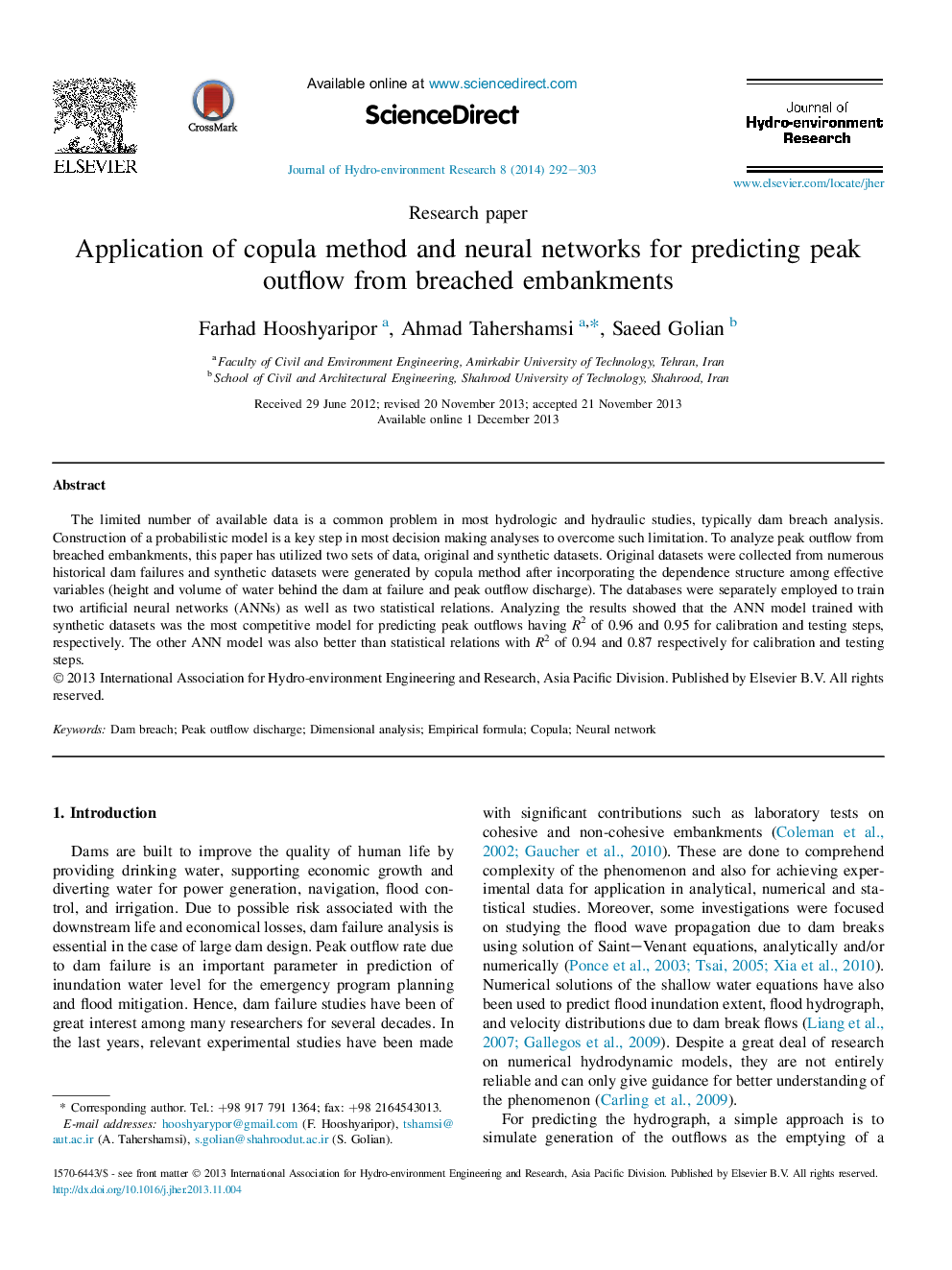| کد مقاله | کد نشریه | سال انتشار | مقاله انگلیسی | نسخه تمام متن |
|---|---|---|---|---|
| 4493677 | 1318661 | 2014 | 12 صفحه PDF | دانلود رایگان |
• In this research 93 historical dam breach datasets were collected and analyzed.
• Due to limited datasets, the database was expanded using Copula method.
• Applying dimensional analysis, an empirical relation was developed.
• A robust artificial neural network was setup for predicting peak outflow discharge.
The limited number of available data is a common problem in most hydrologic and hydraulic studies, typically dam breach analysis. Construction of a probabilistic model is a key step in most decision making analyses to overcome such limitation. To analyze peak outflow from breached embankments, this paper has utilized two sets of data, original and synthetic datasets. Original datasets were collected from numerous historical dam failures and synthetic datasets were generated by copula method after incorporating the dependence structure among effective variables (height and volume of water behind the dam at failure and peak outflow discharge). The databases were separately employed to train two artificial neural networks (ANNs) as well as two statistical relations. Analyzing the results showed that the ANN model trained with synthetic datasets was the most competitive model for predicting peak outflows having R2 of 0.96 and 0.95 for calibration and testing steps, respectively. The other ANN model was also better than statistical relations with R2 of 0.94 and 0.87 respectively for calibration and testing steps.
Journal: Journal of Hydro-environment Research - Volume 8, Issue 3, August 2014, Pages 292–303
